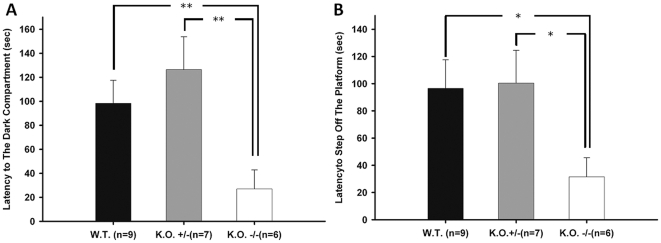Figure 4. Passive avoidance tests.
A. Step-through passive avoidance test. The latency of the mice entering the dark compartment was recorded 24 hours after the training session. The latency of the Cav3.2 −/− mice (KO −/−) was significantly shorter than that of the WT and the Cav3.2 +/− (KO +/−) mice. Asterisk indicates p<0.01; numbers in parentheses indicate the number of animals used in this experiment. B. Step-down passive avoidance. The latency of the mice to step off the elevated platform onto the floor was recorded 24 hours after the training session. The latency of the Cav3.2 −/− (KO −/−) to step off the platform was significantly shorter than that of the WT and Cav3.2 +/− (KO +/−) mice. Asterisk indicates p<0.05; numbers in parentheses indicate the number of animals used in this experiment.

